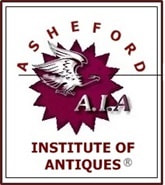 Millennials Tap Into Online Community Millennials Tap Into Online Community New York - It wasn't that long ago that many bemoaned the fact that millennials just didn't seem to be interested in antiques or anything old. But oh what a difference a few years can make. Fast-forward to the beginning of the twenty-first century's third decade, and millennials have literally become the driving force in today's antiques and collectibles marketplace. Sales of vintage items from online platforms have never been higher, and the resurgent interest in antiques and collectibles by a younger generation has suddenly become the norm, not the exception. However, what's been most startling about this recent generational shift has not been the interest-led move from the over-50 crowd, to twenty and thirty-somethings, but how millennial's have managed to transform the entire buying and selling process, as well as the customer base to which they're trying to reach. How such upstarts have been so adept at wedging their foot through the proverbial decorative arts sales door, may seem like a mystery to those of us currently pondering the need for dentures, but for the younger generation, hitting a successful stride in the antiques and vintage business simply came down to one all-important platform; Instagram. While Facebook's sister company certainly isn't new to the scene, it's how the "Gram" has been used and developed by millennials that sets it apart from the rest of the crowded online marketplace, and especially bricks & mortar companies.  Not Just Coffee For Sale Not Just Coffee For Sale Devon Hall, who just turned thirty, and runs an organic deli/coffee shop, cum-vintage furniture business in Seattle, says that by incorporating her vintage items into her actual storefront setting, she's able to not only advertise her coffee business, but also her vintage wares. "I don't plug myself into traditional advertising sites or newspapers," says Hall, "because I'm solely on Instagram." By cultivating her IG followers, Hall says she's been able to build up a really solid base of connected customers, without having to fund an exorbitant advertising campaign. Hall claims that this natural approach to client-gathering has garnered interest not only in her products, but in her brand as well. "It's sort of like a two-for-one," says Hall, "people know my coffee, but they also know they can buy the chair they're sitting on - it's let our Instagram page become a virtual gallery." Many of the new millennial dealers say that selling on Instagram has an entirely different feel than other online related resources. Nancy Lee, an furniture restorer and vintage dealer with two shops on Etsy, says that overtime she's found that by carefully curating her followers, and DM'ing with people of a similar interest on Instagram, that her sales have become much more consistent than on Etsy alone. "Instagram is more of a community of like-minded individuals," says Lee, "Some of my followers are buyers, and some sellers, but there's much more of a direct connection between us than on any other platform." Lee thinks that pricing also has a lot to do with her success. "When you're acquainted with your followers, you're more likely to give discounts than you would to a make-an-offer request from a random stranger on sites such as eBay." While Lee notes that cutting prices can affect the bottom line, she says the volume of overall sales received from her Instagram clientele has easily made up the difference. "It can take a while to build up a solid list of connections," says Lee, "but in the end, it doesn't cost anything but time and interaction."  A Shared Sense Of Creative Expression A Shared Sense Of Creative Expression Some of Instagram's features can also apparently play a prominent role when it comes to millennial success rates - at least according to Peter Hodge, a Brooklyn art gallery owner who started incorporating vintage and mid-century themed pieces into his space after creating a dedicated Instagram business page for his gallery. Hodge says that features such as "Stories" can generate real walk-in business from his list of IG followers. "It's not like the old days where you set-up a web page blasting out hundreds of photo-items, while hoping for an add-to-cart click." Today, Hodge says it's all about building your presence within an online community. "IG lets me interact with clients and other shop owners in real time - there's a sense of creativity and sharing that goes beyond just generating sales." Anne Sayers, says she used to run a vintage booth in a flea market in the San Francisco Bay Area, prior to Covid hitting, but had to pivot quickly once lockdowns became the norm. "I hadn't really paid that much attention to Instagram before the pandemic because my business had always been face-to-face." However, Sayers claims that she soon realized there was a potential market in connecting with other booth owners who were also suffering from the shutdown. "I started to DM them on Insta and then moved onto setting up smaller curated groups where we could buy, sell, and trade with each other." Sayers says that after a while interest in the groups really began to take off, and so did her number of followers. "It's been kind of crazy," says Sayers, "One day you're worried about being shut down, and the next you're planning your own pop-up shows with people you've connected with on the gram." This communal sense of working together, whether it be collaborating on a pop-up vintage exhibition with other stores, sharing techniques for photo shoots, or collectively creating dedicated antique and vintage "groups" related to one's Instagram page, seems to be at the core of how millennials perceive the construct of doing business today. For dealers like Peter Hodge, it's a far cry from his father's furniture business of only twenty years ago, where everything was literally cut-throat when it came to the competition. "I think my Dad would literally take a turn-or-two today if he could see how we collectively benefit by sharing our resources and sales leads," say Hodge. "I've not only sold more through my IG connections than I ever did before, but I've also made some great friends along the way..." - A.I.A. Staff Writers  NOTE: For readers seeking more information about the Asheford Institute Of Antiques distance-learning program on professional-level appraising, the study of antiques, collectibles, vintage and mid-century modern items, please click here to visit the school's Home Page. Should you have additional questions about the Asheford program, you can also write to the school at: info@asheford.com or call the Registrar's Office toll-free at: 1-877-444-4508. Comments are closed.
|
AIA StaffWe're providing our students and reader's with the latest breaking news on events and happenings that we think might be of interest to both collectors and dealers alike. Including changes within the world of antiques, vintage, collectibles and appraising that might just have an effect on your bottom line. We're also interested in hearing from you - so if you've got a great newsworthy story, let us know, and you just might find it here! Archives
July 2024
CategoriesLegal Disclaimer: Extraneous opinions, statements and comments made by individuals represented within these posts do not necessarily reflect those of the Institute. The publication naming of specific business entities, organizations, and concerns, contained herein, in no way represents an endorsement or recommendation of services or products by the Institute. Publicly identifiable information contained herein (including, but not limited to contact information), has been intentionally limited where possible, due to privacy and legal concerns related to the digital dissemination of information through online means. All views expressed herein are those of their respective owners. The Institute is in no way responsible, financially or otherwise, for the accuracy or validity of statements contained within published posts from sources that originate and appear outside of the written and expressed views of those submitted by the Institute.
|

 RSS Feed
RSS Feed




